Like every capital, Beijing has its own set of surprises, which are even more astounding when considering their mixture with the volume of culture and landmarks they offer. Television-like Beijing provides something for everyone, from century-old palaces to marketplaces for shopping. As they say, in the heart of the busiest region rests this stunning city, one packed with its fair share of peace and great places for relaxation – this place makes time stand still and guarantees a good time. So, whether you are heading to Beijing for the first time or already have, it is worth visiting at least once to experience its delightful hospitality.
What Are the Most Iconic Attractions in Beijing’s Forbidden City?
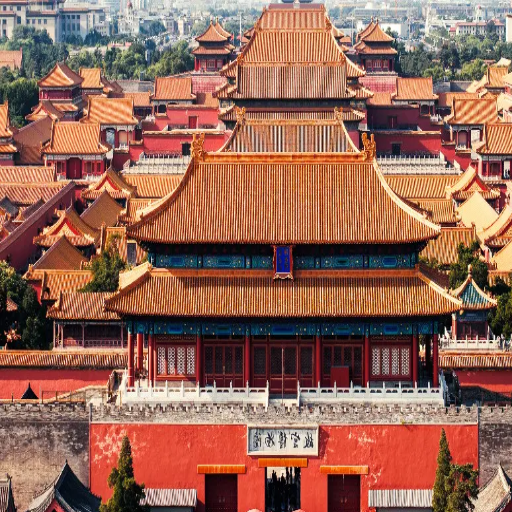
Exploring the World’s Largest Palace Complex in the Heart of Beijing
At the heart of Beijing lies the Forbidden City, the world’s largest and best-preserved ancient palace complex. Built between 1406 and 1420 during the Ming Dynasty, it encompasses roughly 180 acres and hosts over 980 buildings and about 8,700 rooms. This UNESCO World Heritage Site offers examples of traditional Chinese palatial architecture, capturing the Chinese empire’s perspective, symmetry, and magnificence.
Area: 720,000 square meters (180 acres); it is more than twice the eagle’s nest and, therefore, the largest in the world.
Structure Count: 980 surviving intricately designed buildings, one of which is the Hall of Supreme Harmony (Taihe Dian), the largest wooden structure in China and the globe.
Historical Significance: The place of residence for 24 emperors of the Ming and Qing Dynasties, which is an almost 500-year reign of the empire.
Architectural Style: Symmetrically structured, constructed from wood, and capped with conventional yellow tiles. The yellow represents supreme power, and only the Emperor was allowed to use it.
The Forbidden City’s importance does not rest solely on its architectural magnificence. The tremendous Imperial history and cultural heritage enveloped in the walls assist tourists in experiencing profound insights into China’s history. The main gate allows a phenomenal view and exposes tourists to myriad opportunities for capturing memorable photographs.
Must-See Courtyards and Halls Within the Forbidden City
Meridian Gate (Wu Men): The Forbidden City and the Imperial Palace Complex have the Southern Meridian Gate as their main entrance gateway, the largest of the four gates. The gate features five stunningly arched doors, the middle assigned for the Emperor’s use. It is hard to forget its emblematic size and what it sees as imperial rule as one strides through these gates for the first time.
Hall of Supreme Harmony (Taihe Dian): This is the largest Hall on the Southern side of the Forbidden City and Royal Palace, where necessary crown and wedding activities occur. The hall is set on three levels of a marble balcony of 35 m height, which counters the emblem of the emperor’s might. The entrance is richly ornamented with spiral dragons and gold sculptures, which are regarded as the prominent relics of the Ming and Qing monarchs.
Hall of Central Harmony (Zhonghe Dian): The adjacent part of the Hall of Supreme Harmony has this shorter yet strikingly decorated hall serving as a waiting room for the emperor before formal occasions. This radiant space is made of stone and wood, symmetric to fit sturdy sculptures and calm, which balance two focal underlying concepts from the thoughtful canon of Chinese civilization.
Hall of Preserving Harmony (Baohe Dian): As the last hall in the Outer Court, it catered to grand banquets and the final stages of palace examinations. The interior space is enormous and decorated with elaborate wooden sculptures that show the artistic skill of the Ming and Qing dynasties.
Imperial Garden (Yuhuayuan): At the northern corner of the Forbidden City, this serene garden served as a leisure place for the royal family. It features old cypress trees, rocks shaped into different forms, and arched pavilions, creating an incredible landscape. These features serve as pleasing relief from the accompanying hall’s grandeur.
These examples illustrate the complexity of Chinese imperial architecture and further reveal the culture and history of the Forbidden City.
Tips for Visiting Beijing’s Imperial Palace Without the Crowds
Avoid Peak Hours: I recommend planning your trip to the palace in the morning right before it opens, ideally around 8:00 am or in the late afternoon before it closes around 4:30 pm. During these times, the number of visitors is comparatively lower. Always double-check the opening times because each season has a different operating time.
Avoid Weekends: National Holidays and Weekends are prime times for high-volume crowds. Crowds are much more manageable during the Tuesday to Thursday block of the week.
Use Presale Tickets: You can bypass the long lines at the entrance by purchasing tickets online beforehand. The palace can accommodate 80,000 visitors daily, so buying your tickets beforehand will give you a hassle-free experience.
Use Alternative Gates: From the South entrance, hop on through the Meridian Gate before leaving through the Gate of Divine Might. Although this route has a less dense view than the Northern Gate, it allows for a unique easter egg view of the palace.
Visit Imperial Garden: Don’t forget to marvel at the Imperial Garden alongside the Hall of Supreme Harmony gallery. These places tend to be more popular but are still worth visiting.
Head out during the Off-Season: Spring and autumn are pretty busy, while winter is much colder. This is particularly true for Beijing’s tourism level. Although there are fewer tourists in the winter, the city receives many visitors, and summer is charming.
With some constructive planning and research before the visit, travelers can appreciate the beauty and craftsmanship of the Imperial Palace in Beijing through a lesser-known lens that is profoundly personal and gives a much more memorable experience.
How can you experience the Great Wall of China from Beijing?
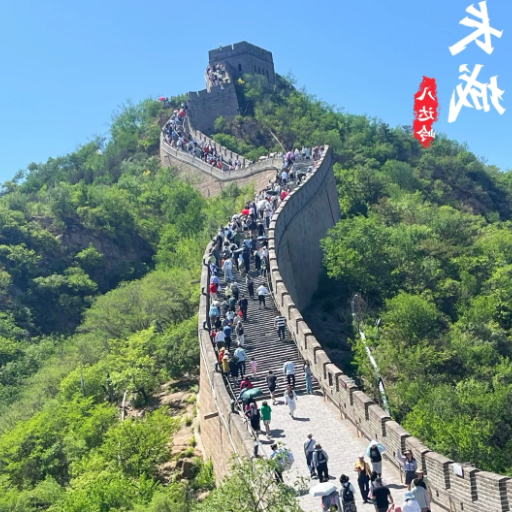
Comparing Mutianyu and Other Great Wall Sections Around Beijing
Visitors often prefer the Mutianyu section of the Great Wall due to its stunning scenic views, convenient location, and effortlessly accessible overall structure. Compared to other options, like Badaling or Jinshanling, Mutianyu is far less crowded while still offering astonishing views and historical importance.
Location: For greater access to Limehouse and the river, Mutianyu is situated around 70km away from the Beijing city center, which translates to roughly a 1.5 to 2-hour journey by car. For tourists wanting to travel to the rest of Beijing or the Badaling area, these locations’ most popular setting often results in more significant congestion and far noisier surroundings.
Condition: Located in a far more tourist-dense region, Mutianyu is visited by many simply due to its exemplary preservation, which results in effortless mobility. On the contrary, Simatai and Jinshanling are left in a far more natural setting, with closed trails that appeal to hikers.
Aesthetics: Mutianyu is exceptionally splendid in autumn when dense forests and alluring landscapes surround it. The untouched areas surrounding Jinshanling and Simatai also offer stunning views but are challenging to hike due to their steep slopes and isolation.
Crowds: While Mutianyu is not a hidden gem, it is significantly less crowded than Badaling, making it an excellent option for travelers looking for a quieter experience. Even though it gets more popular during peak tourism seasons, its chances of offering solitude are way higher than Badaling.
Facilities: Mutianyu is traveler-friendly, with a cable car, chair lift, and toboggan slide available for a quick descent. Other sections like Jinshanling and Simatai usually have fewer tourist facilities, which some travelers may find desirable.
Zu Chang recommends Mutianyu for its accessibility, vision, beauty, and fewer visitors. Still, for the more rugged, adventurous, and solitary experiences, Jinshanling or Simatai is more suited. Always plan according to your fitness level and travel schedule, as the Great Wall is not an experience to be wasted.
Best Times to Visit the Great Wall to Avoid Tourist Crowds
A visit to The Great Wall enables tourists to experience unparalleled panoramic views from the famous structure. For tourists hoping to avoid long-standing tourist lines, the best times to visit the wall would be during early mornings between 7:30 AM and 8:00 AM, with weekdays being the clear winner. None of the tourists try to see the wall during off-peak times, including late autumn and early spring. These periods offer weather that is neither too hot during the summers nor too cold, like the winters.
Opening Hours: Most sections open around 7:30 AM to 8:00 AM; arriving early reduces congestion.
Peak Tourist Seasons: The summer months (June to August) and national holidays, particularly Golden Week (October 1–7), attract the heaviest crowds. Avoid planning visits during these times.
Weather and Visibility: Late Autumn and early spring typically offer clear skies while avoiding extreme temperatures, making them ideal for photography and scenic views.
Considering and planning based on these factors would ensure a more memorable and enjoyable visit.
Day Trip Options to See the Great Wall from Beijing’s City Center
Here are some accessible sections of the Great Wall with unique features that can be visited on a day trip to the Great Wall from Beijing:
Mutianyu: This section is well-preserved, family-friendly, and contains a cable car and toboggan slide. It is about 70 kilometers from Beijing, and it takes about 1.5 hours to get there by car. Unlike Badaling, Mutianyu is less crowded and abundant in scenic beauty, making photography an ideal activity.
Badaling: Located approximately 60 kilometers from Beijing, which takes 1-1.5 hours by car or a direct train, Badaling is the most popular, tourist-friendly section of the Great Wall. Because this section receives the most tourist traffic, it can become excessively crowded during peak seasons. Unlike other sections, it has restored pathways and is accessible to people of all ages.
Jinshanling: This section is less visited, making it ideal for tourists who want to avoid crowds. It is around 130 kilometers from Beijing and requires approximately 2 – 2.5 hours of travel. In addition to being less crowded, this section features original unrestored architecture and scenic hiking trails, making it ideal for avid hikers. It requires about two to two and a half hours of travel.
Simatai: For those who appreciate views, Simatai should be the section of choice, given its breathtaking views, especially at night. About 120 kilometers away, it can be reached in about two hours of driving. This section is unique because it combines beautiful visuals with rich history and features a cable car for easier access.
Such options favor a range of preferences, from easily accessible to unique and peaceful experiences, helping visitors maximize their day trips.
What Makes the Temple of Heaven Park a Must-Visit Attraction?
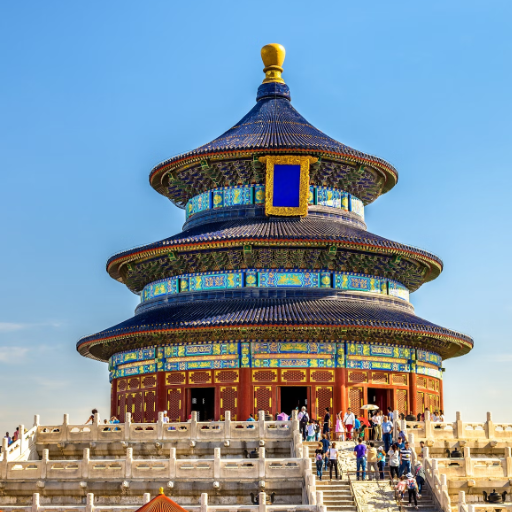
Discovering the Hall of Prayer for Good Harvests Architecture
The Hall of Prayer for Good Harvest is famous for its complexity and significance, marking it as one of the most astounding works of ancient Chinese architecture. The structure is 38 meters in height and 36 meters in diameter, being held up by twenty-eight colossal wooden pillars, each lacking a single nail. The building is made of wood and has three blue-glazed tiers, like heaven. It rests on a three-tiered marble pedestal depicting earth and representing harmony between heaven and earth.
The hall’s circular shape maximizes its acoustic properties, allowing divine prayers to be heard. This structure is visually attractive and displays the fusion of advanced science and art with the multifaceted religious beliefs of Chinese civilization.
Morning Tai Chi and Local Life at Temple of Heaven Park
Entering the Temple of Heaven Park at dawn is an opportunity to witness how the locals live. One of the most notable things is Tai Chi, a form of martial art. The slow gestures with Tai Chi are designed to balance the body and spirit. Practitioners routinely partake in this deep-rooted activity, which is believed to improve the body, mind, and soul. From elderly citizens to younger individuals, people from all walks of life can be seen performing Tai Chi at the parks.
Furthermore, the locals can also engage in community activities such as kite flying, playing music, and even dancing. These vivid activities display typical life in Beijing while also allowing tourists to immerse themselves in the local culture.
Photography Tips for Temple of Heaven’s Iconic Buildings
Timing and Lighting
Try visiting in the early mornings or late afternoons for the best natural lighting and architectural detail. This will help reduce harsh shadows.
Plan to arrive around dawn to capture the golden hues of a sunrise. In the late afternoon, the warm tonal quality is excellent for capturing sunset shots.
Framing the Hall of Prayer for Good Harvests
Enhance the grandeur of the circular structure by framing it with leading lines from the surrounding pathways or using symmetrical compositions.
Aperture settings: f/8-f/11 will be perfect for capturing sharper images with intricate details and preserving the depth of field.
Capturing the Circular Mound Altar
Position yourself at a lower angle to capture the altar’s layered symmetry.
Wide-angle lenses (e.g., 16-35mm) completely capture the structure. Use a shutter speed of 1/125s or faster to maintain clarity in less light.
Balanced Exposure for Interiors
Tripods are fantastic for photographing interiors in low-light situations. A slower shutter speed (e.g., 1/10s) combined with an ISO of 400-800 provides decent exposure without noise.
Use light to illuminate situations, and avoid direct flash for natural results.
Emphasizing Cultural Engagements
When attempting to photograph energetic activities like local tai chi practitioners or people playing traditional instruments, mildly capture them with a zoom lens, such as 24-70mm.
Pick a shutter speed of 1/250s or higher to ensure no blurriness due to motion while still controlling the facial and physical expressions of the subjects captured in the frame.
With the proper modifications and recommendations, you can portray culturally rich and scenic images of the structures at the Temple of Heaven and the surrounding vicinity.
How to Explore Beijing’s Historic Hutongs?
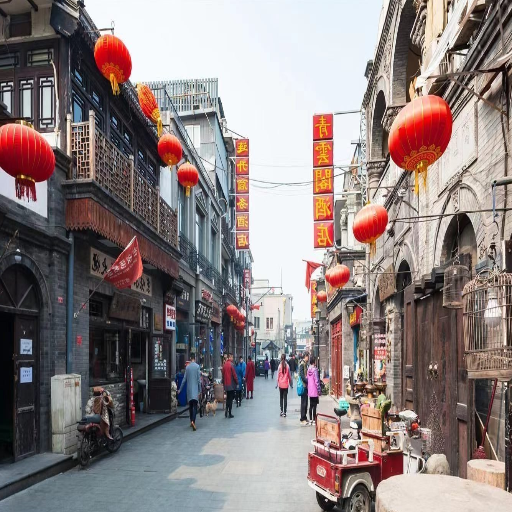
Nanluoguxiang and Other Must-See Hutongs in Beijing
Beijing’s Nanluoguxiang Hutong is one of the city’s most energetic and well-maintained alleyways, demonstrating its rich history and modern beauty. While taking photos of this area, I would advise utilizing a wide angle lens, ideally a 16-35mm, so you can capture the narrow sidewalks and the exquisite details that the traditional courtyard homes offer. For elegant street photography, an aperture of f8 to f10 is preferred to achieve a deep field depth and have all picture aspects sharp. During the evening, when there is not a lot of light available, try increasing the ISO to 800 or above and using a tripod to minimize camera shake.
Yandai Xiejie and Dongjiaominxiang are other notable hutongs. Distinct features such as the antique stores at Yandai Xiejie or the European-style architecture at Dongjiaominxiang are eye-catching. Change the settings to the specific lighting and composition requests, such as increasing the shutter speed to 1/60s for twilight pictures or employing a polarizing filter on sunny days to lessen glare. With these settings, you can showcase the beautiful hutongs in your photos.
Authentic Experiences in Beijing’s Traditional Courtyards
While touring traditional courtyard areas in Beijing, I aim to capture the area’s timeless ambiance as best I can. I prefer to photograph early mornings or late afternoons when the light is softer and more flattering. To capture images of this nature, I set the ISO to 200-400, the aperture between f/5.6 and f/8, and a shutter speed of 1/125s or above to counter motion blur.
Should the lighting change, like during twilight or in the shaded areas of the courtyards, I will raise the ISO to 800 or higher and lower the shutter speed to 1/60s while having a tripod to help stabilize. Using a polarizing filter is also essential to dull the reflections on the windows or water surfaces, enhancing the colors and features of the spaces. These are some of the necessary techniques to make sure what is captured picture-wise retains the tranquil beauty of the traditional courtyards of Beijing.
Guided Tours vs Self-Guided Walks Through Beijing’s Hutongs
My choice between guided tours and self-guided walking excursions around the hutongs of Beijing depends on the level of detail I want to cover. While guided tours have advantages, such as benefiting from expert historians’ and culture specialists’ accounts, I appreciate the fascinating details and proportions of these courtyards and alleys. However, these tours can sometimes be overly tailored in time and angle changes I would need to take for photos, which might have to be taken almost instantly. For example, on many occasions, I hold my camera settings reasonably flexible, with an ISO setting of 400-800 and an aperture of f/5.6 to f/8 to have enough light and depth of field for energetic photographs. In addition, a faster shutter speed, say 1/125s or above, is needed to capture the action as the group proceeds with speed.
During self-guided walks, I have the most freedom to move around and spend extended periods composing images. This approach suits more creative photography because I can tailor my technical settings to specific scenes. I sometimes use a tripod for shaded alleys or twilight scenes and can set the camera at ISO 800-1600, with a shutter speed of 1/60s or less and a wide aperture like f/3.5-f/5.6 for maximum light gathering. Both approaches have their advantages. However, finding a balance between the dynamics of each option and the technical settings ensures that my photos authentically narrate the story of Beijing’s hutongs.
Where to Experience Modern Beijing’s Art and Culture?
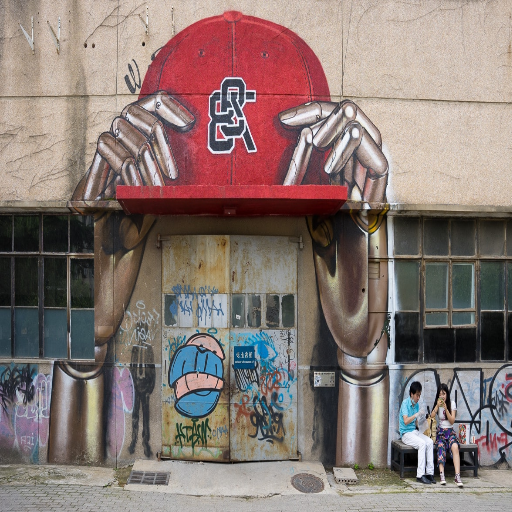
Exploring the 798 Art District’s Galleries and Cafes
Perhaps my favorite part of Beijing to take pictures and witness art in motion is the 798 Art District, which is a mixture of contemporary culture and modern art. The district is industrial in appearance, boasting numerous red brick factories, large chimneys, and walls decorated with vivid graffiti, which makes for excellent backdrops for photographs. While walking through the galleries and cafes, I like to blend wide-angle and portrait lenses to capture the vast buildings and the detailed artwork and installations.
Due to the lighting found indoors in most galleries, I work with several settings, such as increasing ISO up to 800-1600 and setting f-stop to f/2.8 or f/4. I limit the shutter speed to 1/60 or 1/125 to obtain clarity for handheld pictures. However, the outdoor area 798 allows me more flexibility, and I can lower the ISO to set it between 100 and 400 and use a higher f-stop, such as f/8. This smaller aperture allows me to capture a wider depth of field while still exposing me to the natural sunlight. These changes will enable me to capture the vibrant street life within the cafes and the drastic scale of the stunning architected art spaces in the district.
Shopping and Food Adventures at Wangfujing Street
In addition to its side-by-side shopping and food options, the mood on Wangfujing Street can be best captured photographically through a slightly different lens. Whenever I capture the frenetic activity at the markets or shops, I use a mid-range zoom lens like 24-70mm as it can easily be changed from broad to detailed shots. For a place’s various lighting conditions, from neon signs to food stall lighting, I set my ISO between 400 and 800 and the aperture at f/4. This gives a good amount of light while allowing a good depth of field in the lively environment. To capture motion like food vendors making the food or people walking by, I tend to place the shutter speed around 1/125s to 1/250s, freeing movement fairly well.
Capturing food is best done with a prime lens when the focus is highly specialized on a tempting intricacy like the sugar-dipped fruit or the dumplings. In the case where the focus is on food, a 50mm f/1.8 lense best serves the purpose, as it creates a blur (bokeh) in the background and keeps the food sharply in focus. While shooting indoors without a tripod, I am forced to raise the ISO to as high as 1600 when needed, as there is only so much light indoors. Wangfujing Street holds numerous differing cultures and traditions which all offer unique food, thus, these changes greatly help in documenting the energy and rich flavors the street has to offer.
Beijing’s Contemporary Attractions for 2024 Travelers
In 2024, my visit to Beijing revolves around marvels such as the National Centre for the Performing Arts, Galaxy SOHO, and the CCTV Headquarters. I tend to use wide-angle lenses (16-35mm) for photos and videos to optimize the unique structures alongside their dramatic lines. Regarding daytime photos, I prefer to set my aperture anywhere from f/8 to f/11. This ensures sharpness throughout the frame and guarantees optimal daytime shots. Furthermore, setting my ISO to 100 delivers the best image quality. Daytime shutter speeds of around 1/125s work well, while slower speeds during the evening hours require a tripod.
If there is a light show or any form of dynamic advertisement, I use a polarizing filter for these evening photographs to minimize glare while increasing contrast. Adding a tripod, setting my aperture to wider angles, and increasing the ISO to 800 allow me to capture serene shots of the city; albeit with some noise, the ambient light is captured without losing too much quality.
By utilizing these techniques, I can capture the breathtaking modern evolution of Beijing while still preserving the vibrancy and distinctiveness of the stunning city.
Frequently Asked Questions (FAQs)
Q: What are the top things to do in Beijing for first-time visitors?
A: Those new to Beijing should make the Forbidden City, the Great Wall, the Temple of Heaven, and the Summer Palace their top priorities. Other mandatory experiences include exploring the hutongs, visiting Tiananmen Square, and trying the original version of the Peking Duck. The city has a tremendous combination of ancient history and contemporary modern development. For a more complete experience, put Lama Temple and the National Museum of China on your list. It is easy to get around these places because the subway system is very efficient.
Q: How should I plan my visit to the Summer Palace in Beijing?
A: During your visit to the Summer Palace, set aside at least half a day to experience this imperial garden. The optimal days are those during the week if you do not want to be overwhelmed with other people. Aim to arrive early and start with Longevity Hill and Kunming Lake. The Long Corridor, with its 14,000 paintings, should not be missed. A Mandarin-speaking guide will help appreciate the beauty of what many consider the best-preserved imperial garden in the world. During summer, you can take a boat ride on the lake to get striking views of this UNESCO World Heritage site.
Q: Should I consider the Lama Temple while visiting Beijing?
A: Certainly! The Lama Temple (Yonghe Temple) is among the most breathtaking Buddhist temples in the city and is undoubtedly one of the sights worth seeing during your visit to Beijing. Unlike some other captured tourist sites in Beijing, it is still an inactive functioning place of worship with monks residing in the temple. The temple features an impressive Buddha statue, which stands at awe 26 meters from a single sandalwood block. The magnificent architecture, stunning courtyards, and spiritual tranquility offer a break from the hustle and bustle of Beijing. Many travelers recommend visiting during the mornings when the locals come to pray, and the incense offerings make everything feel magical.
Q: What are some attractions other than the typical tourist spots that one should visit in Beijing?
A: Other than the typical attractions in Beijing, Beihai Park, The 798 Art District, and the Ancient Observatory are also places worth seeing. Beihai Park is an Imperial Park and one of the oldest in the city, while the 798 Art District is home to modern Chinese artwork. The Ancient Observatory contains astronomical instruments from the Ming Dynasty. Also worthy of mention are the Temple of Confucius and Imperial College, which represent traditional Chinese education. Beijie or Ghost Street is another place to experience Chinese cuisine after dark. Agencies provide extraordinary experiences like visiting a traditional teahouse where one can participate in a Chinese tea ceremony. For the brave, the Wangfujing Night Market offers scorpion on a stick, among other unusual delicacies.
Q: What should I know before visiting the Tiananmen Square?
A: As the cynosure of the country, one has to travel to the heart of Beijing, Tiananmen Square, and remember to note that security is firm and carrying your passport is a requirement. The square is quite enormous as it is the largest square of the city in the world. It has places like the Monument to the People’s Heroes, the Great Hall of The People, and Mao’s Mausoleum, where you can spy the body in their preserved state. However, one can argue that the square forms the center of Beijng, and the Forbidden City is directly opposite. Do not anticipate holding political debates in this area. This place has cultural significance for Chinese people, so kindly respect it.
Q: What accommodation is best located in Beijing near significant sites of interest?
A: In answer to the above question, if you are looking for luxury hotels and shopping, the Wangfujing area is one of the best places to stay. Dongcheng District is also good because it is close to The Forbidden City and Tiananmen Square. Budget travelers may like hutong areas such as Nanluoguxiang, where they can stay in traditional courtyard guesthouses. People who love nightlife will appreciate the Sanlitun area, and those who prefer modern hotels with convenient subway access will find The Financial District accommodating. No matter where a visitor stays in Beijing, the many subways make getting to most tourist spots simple.
Q: What is unique about the hutong parts of Beijing, and which sites should I visit?
A: Nanluoguxiang hutongs are the narrow alleyways containing the traditional courtyard residences believed to be authentic old Beijing living quarters. With rapid modernization, these historic neighborhoods provide insight into the locals’ way of living, slowly fading with progress. Yandai Xiejie (Skewed Tobacco Pouch Street) specializes in crafts and is set in Shichahai, encircling the stunning lakes. The most friendly to visitors, hutongs give tourists a view of the beautiful lakes, trendy shops, and cafes. There is also the option of hiring a guide to walk through the area or taking a rickshaw, which would provide many informative details related to the culture and history of the hutongs. You will surely enjoy exploring these captivating sites as they form an important part of Beijing’s traditions and local customs.
Q: What are the visiting hours of Chairman Mao’s mausoleum in Beijing?
A: In Tiananmen Square, Chairman Mao’s Mausoleum is best visited early because lines can take exceptionally long. The mausoleum is open daily from 8:00 a.m. to 12:00 p.m., except Mondays. The mausoleum does not charge an entrance fee, but all bags, cameras, and water bottles must be stored at the reception. Checkout facilities are available. Visitors are expected to maintain silence and beel speedily through the viewing room, which has Mao’s body preserved and on view in a crystal coffin. You are not permitted to dawdle through the mausoleum, so expect your visit to last around 10 minutes. It is important to note that this powerful memorial to the father of modern China requires respectful dress and security checks.